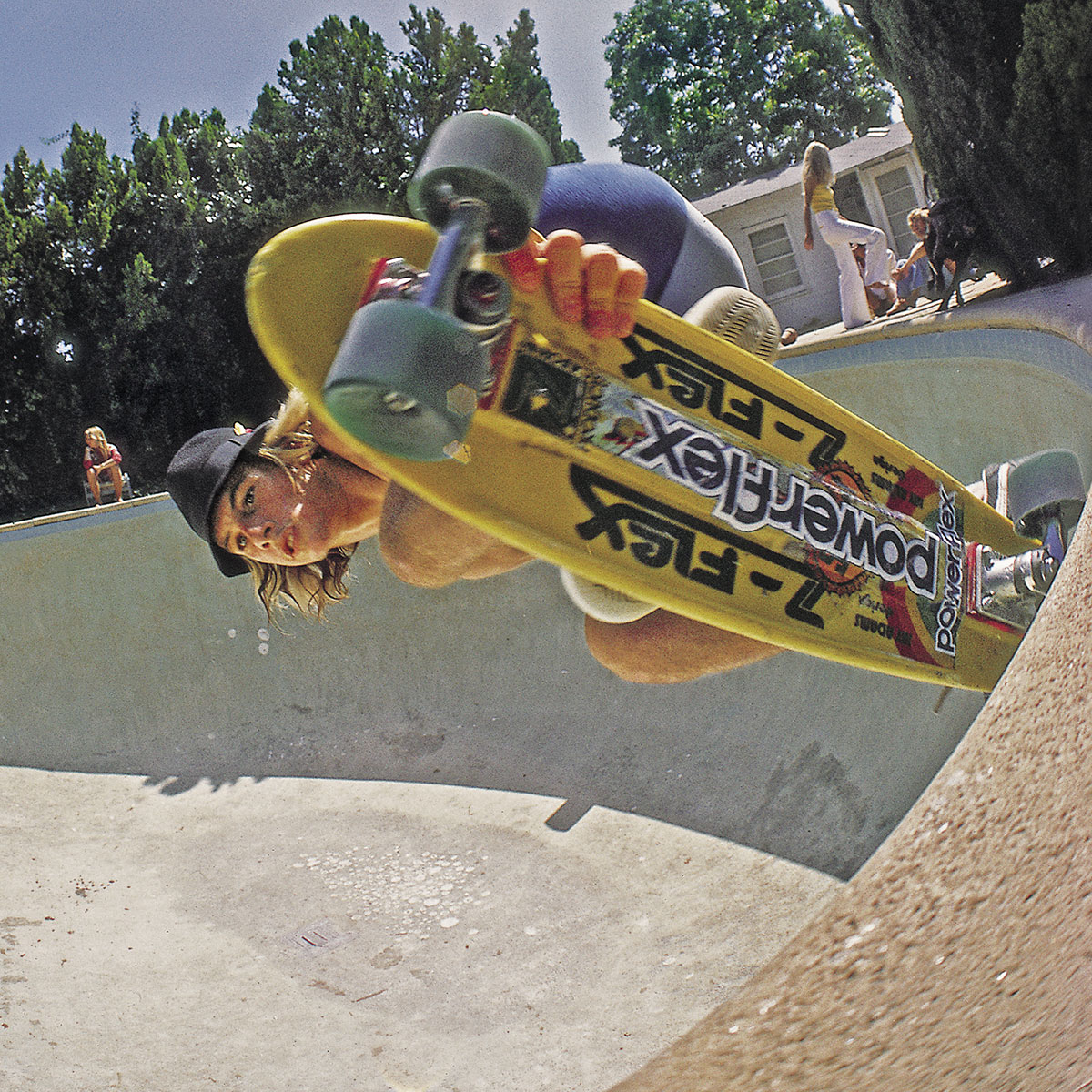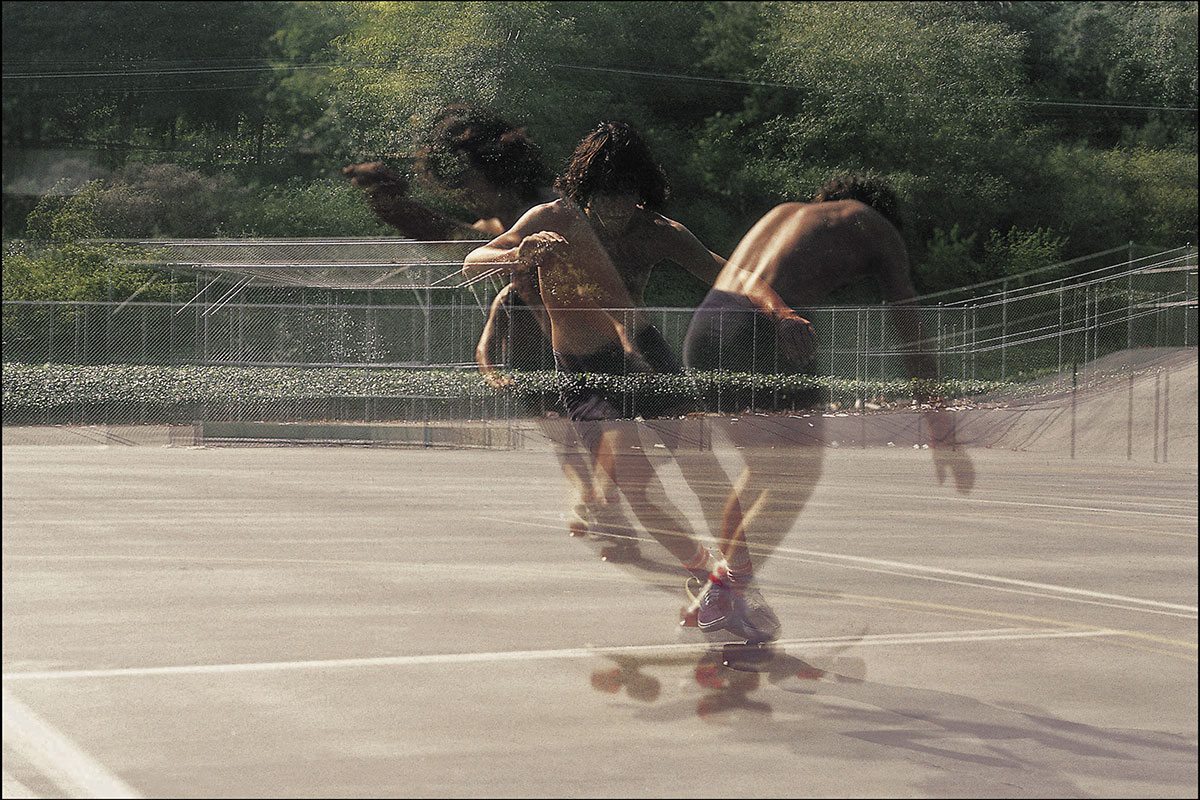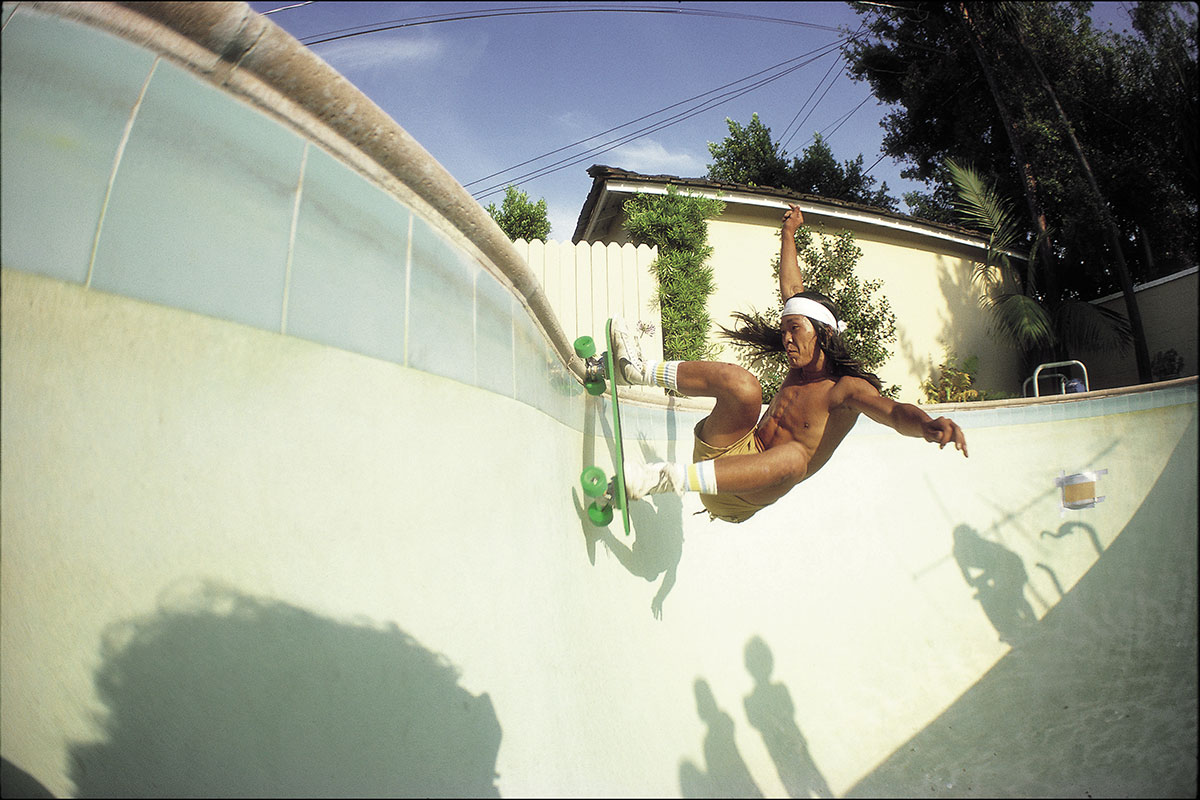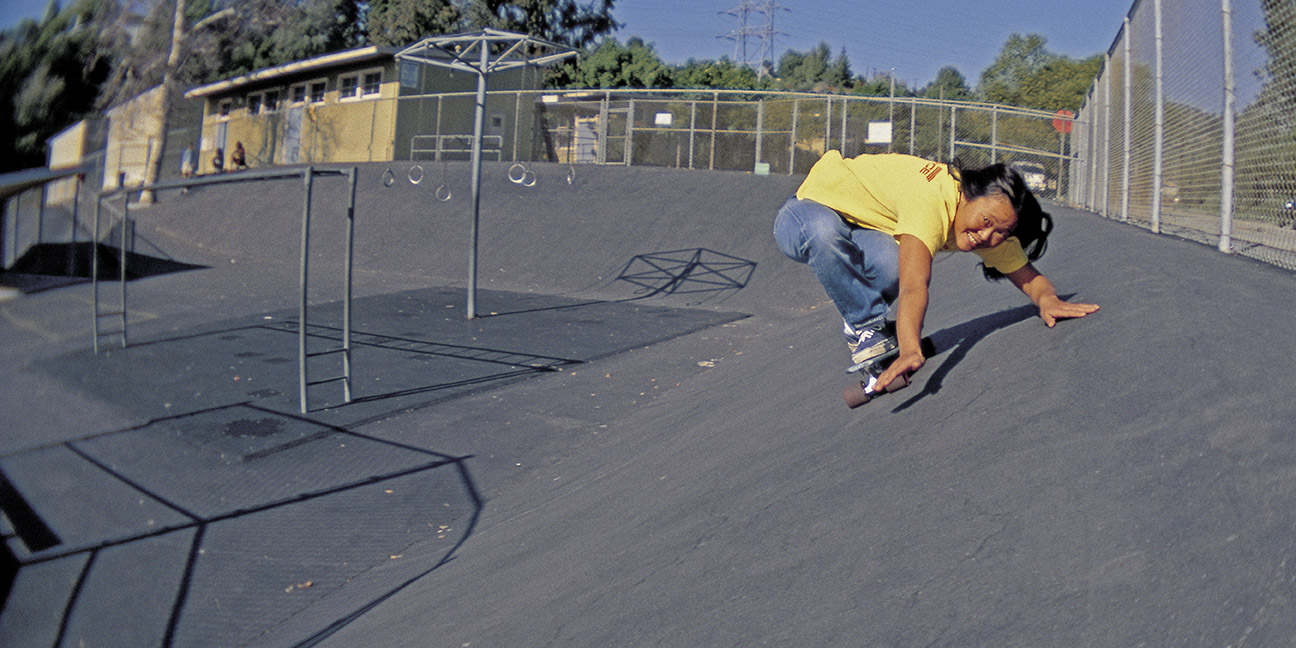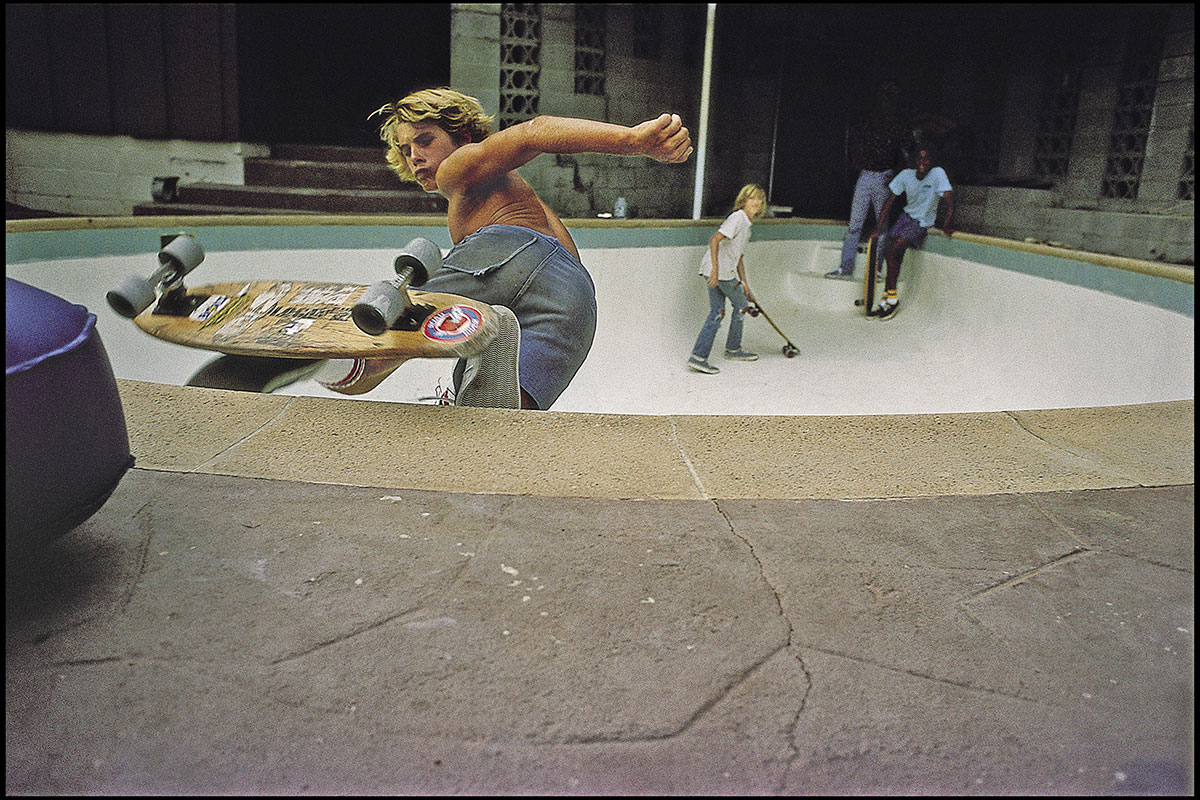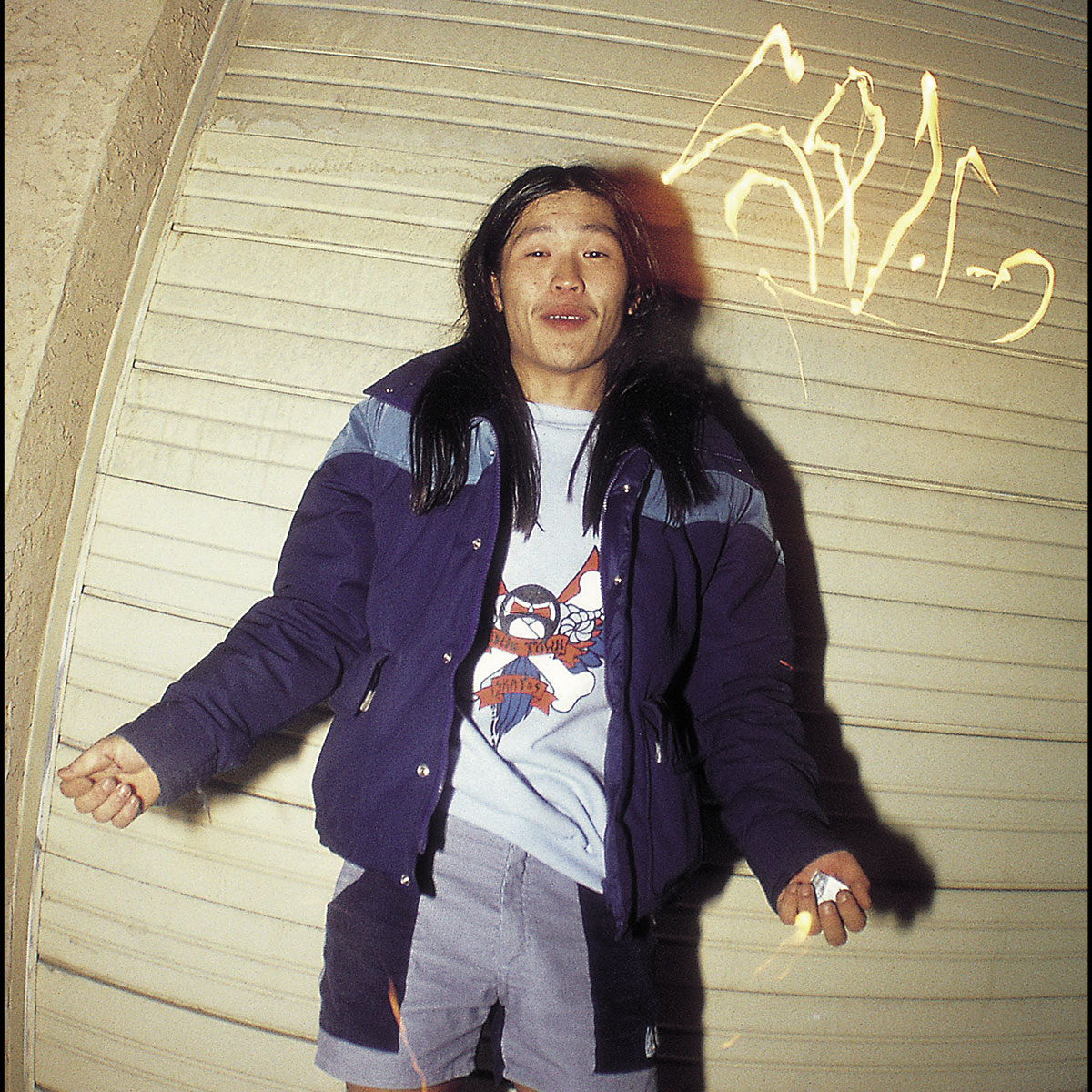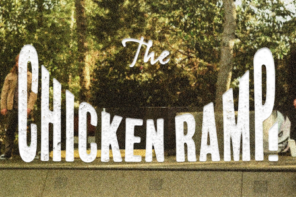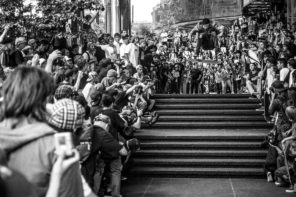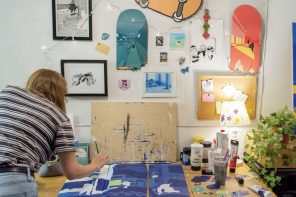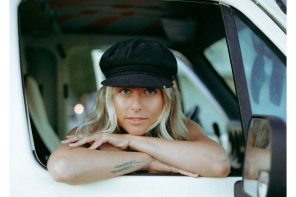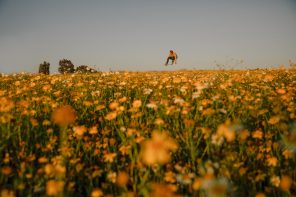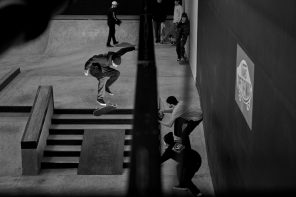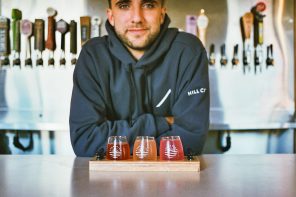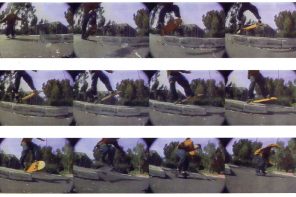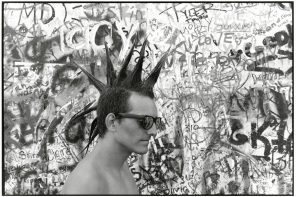An expanded edition of a book of Friedman’s classic photographs offers an up-close-and-personal look at the birth of modern skateboarding
Glen E. Friedman has taken some of the most iconic skateboarding photos you’ve ever seen. And he was something like all of 14 years old when he took many of them. His photos of Tony Alva airing it out over a pool lip in Venice Beach backyard or Jay Adams, tube socks pulled high, grinding through a turn at top speed have taken on an almost mythical air at this point. He pogoed from chronicling the breakout years of the Zephyr Skating Team in Dogtown (Ocean Park, Santa Monica and Venice) to photographing the early days of SoCal punk rock and bands like Black Flag and the Dead Kennedys then went east to capture hip hop’s early years with the Run DMC, The Beastie Boys, Ice-T and Public Enemy. Far from a bystander at these moments, he’s created some of their defining documents.I was witnessing something at the time that was truly unbelievable and unfathomable to the outside world.
It’s been nearly 20 years since the publication of his book “DogTown: The Legend of the Z-Boys” with legendary writer C.R. Stecyk III (which itself was published 20 years or more after many of the photos had been taken) and the book is now getting a greatly expanded re-release (from which the accompanying never-before published photos you see here were taken).
We caught up with Glen to ask about the Dogtown days 40 years on.
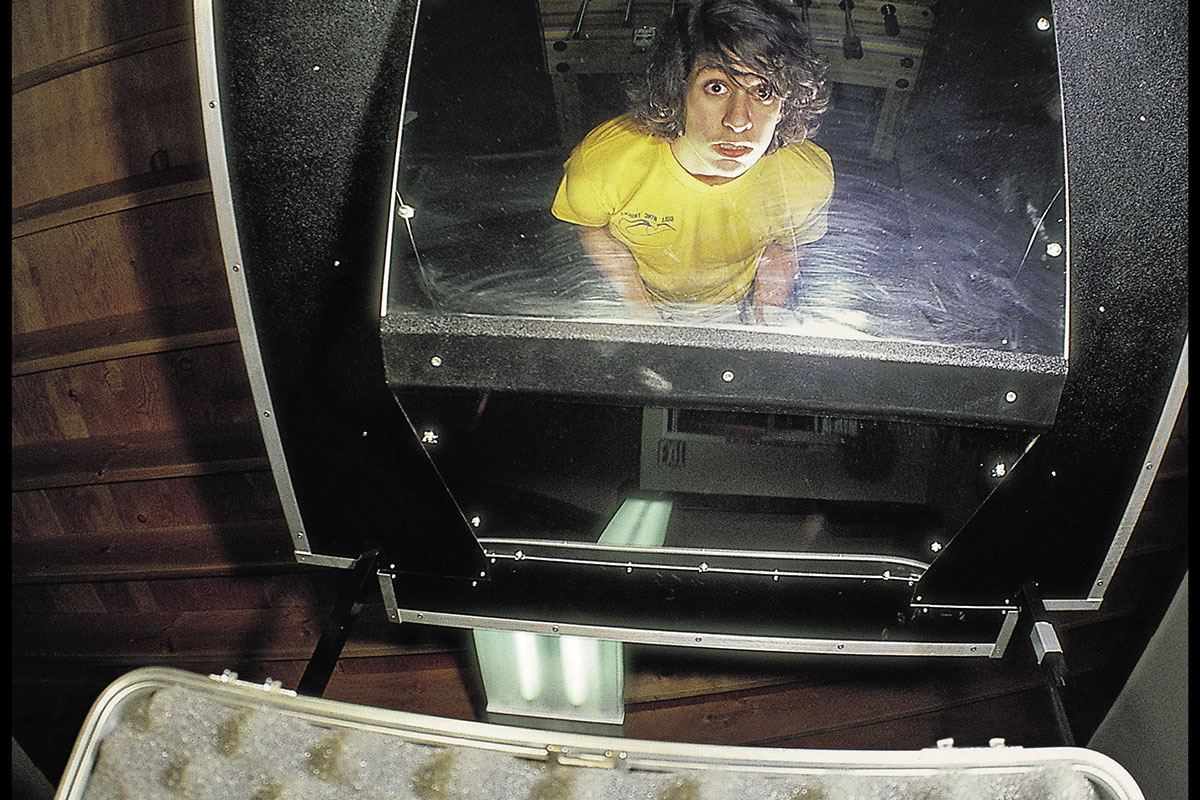
Glen E. Friedman, accidental, end of roll, first-ever self-portrait, 16 years old, at Marina del Rey Skatepark arcade, 1978.
Tell us about the first time you shot the Dogtown skateboarders?
I was a skater myself and they were my friends, just the dudes I skated around. One day I just decided it would be cool to make some pictures of them, because I was witnessing something at the time that was truly unbelievable and unfathomable to the outside world, or even outside of West Los Angeles—it was unique and inspiring.
What did you think was wrong with early skate mag photography?
Well Stecyk’s stuff was always mysterious and exciting and inspiring to me, a lot of the rest of it was kind of sterile and did not portray the action the way I perceived it, so that inspired me at 13 years old to make my own photographs.
A lot of the rest of it was kind of sterile and did not portray the action the way I perceived it.
What prompted you to think you could do it better? How did you do it differently?
I KNEW what I was seeing was unique, and as I said. The photos I would see in the mags just weren’t showing what I wanted them to in most cases, and after I started making photos and seeing the results and getting feedback from my peers and the older dudes, mostly, I was stoked and had confidence that what I was doing was better. Certainly more interesting to my friends and I.
What was your goal photographing back then?
Just portray and compose the most radical photos, with the most style and closest to the absolute 1/500th of a second peak of the action. Get close, get radical, make it look gnarly and inspire others who could not be there to witness what I was witnessing. And then getting shit published in the mag. The Mag of course being “Skateboarder Magazine” because it was truly the bible of all skaters around the world then, and the other mags were garbage in comparison.
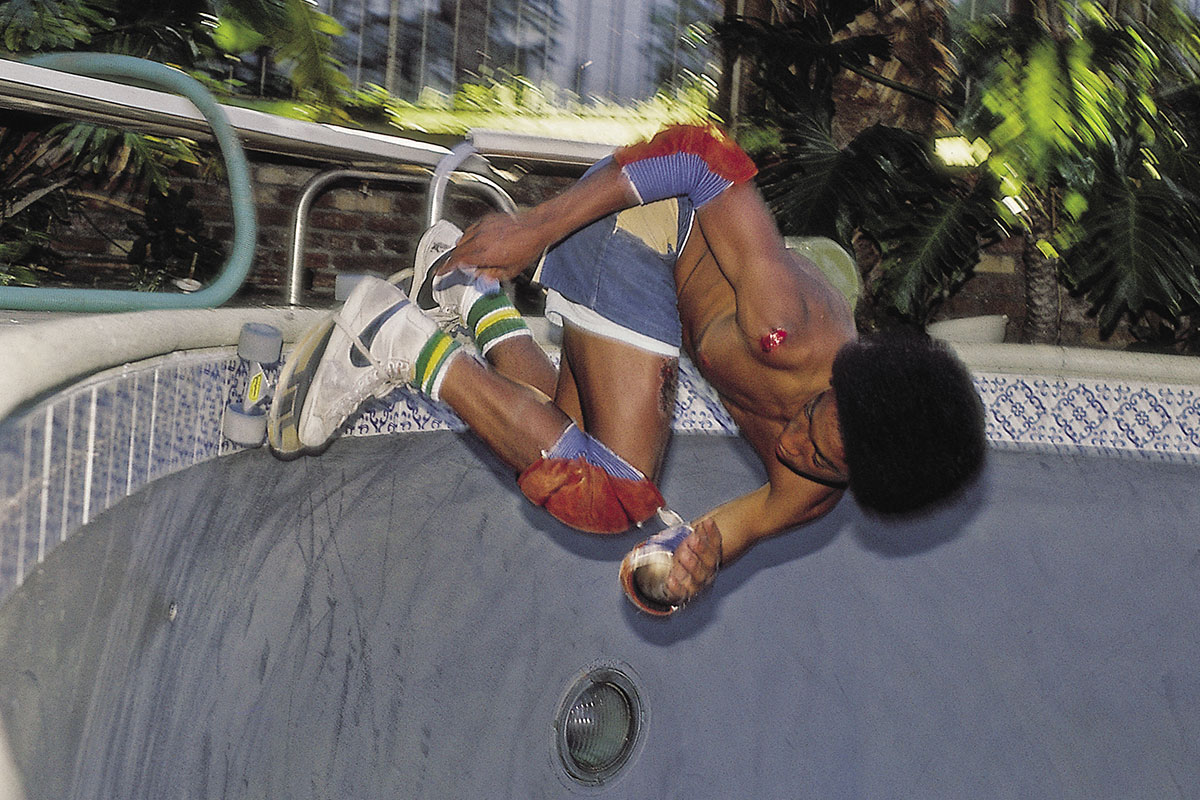
Marty Grimes, Rockingham, 1978.
Your favorite thing to shoot?
Backyard pools, hands down, no question, nothing else close.
What did you learn shooting skateboarding that informed your style shooting punk and music and other things later?
Timing, closeness and intimacy to the subject and composition. Excitement and character are essential. Skateboarding is where I cut my teeth. Things I learned in skateboarding have informed my entire life.
Which skaters stood out and why?
Lots… Tony [Alva] No. 1, Jay [Adams], Stacy, Shogo, DP [Duane Peters], Bobby Piercy, PC [Paul Constantineau], Wentzle [Ruml], Lance [Mountain], Hawk…
Alva just always stood out above everyone in attitude, confidence and aggressive style, and also an ability to empathize with others’ plights (when not competing). He, and most on this list, could be very insightful based upon all they learned from having so much light shine on them and experiences they accumulated from being the originators they were.
Jay was as radical and spontaneous as they get and always made shit look good. His intuition in skating was like few others, and he had a vision that was always spot-on, believe it or not. Jay could be one of the rudest and most fucked up people around but he could also be one of the nicest and most thoughtful, it just depended on what day you caught him.
Jay could be one of the rudest and most fucked up people around but he could also be one of the nicest and most thoughtful.
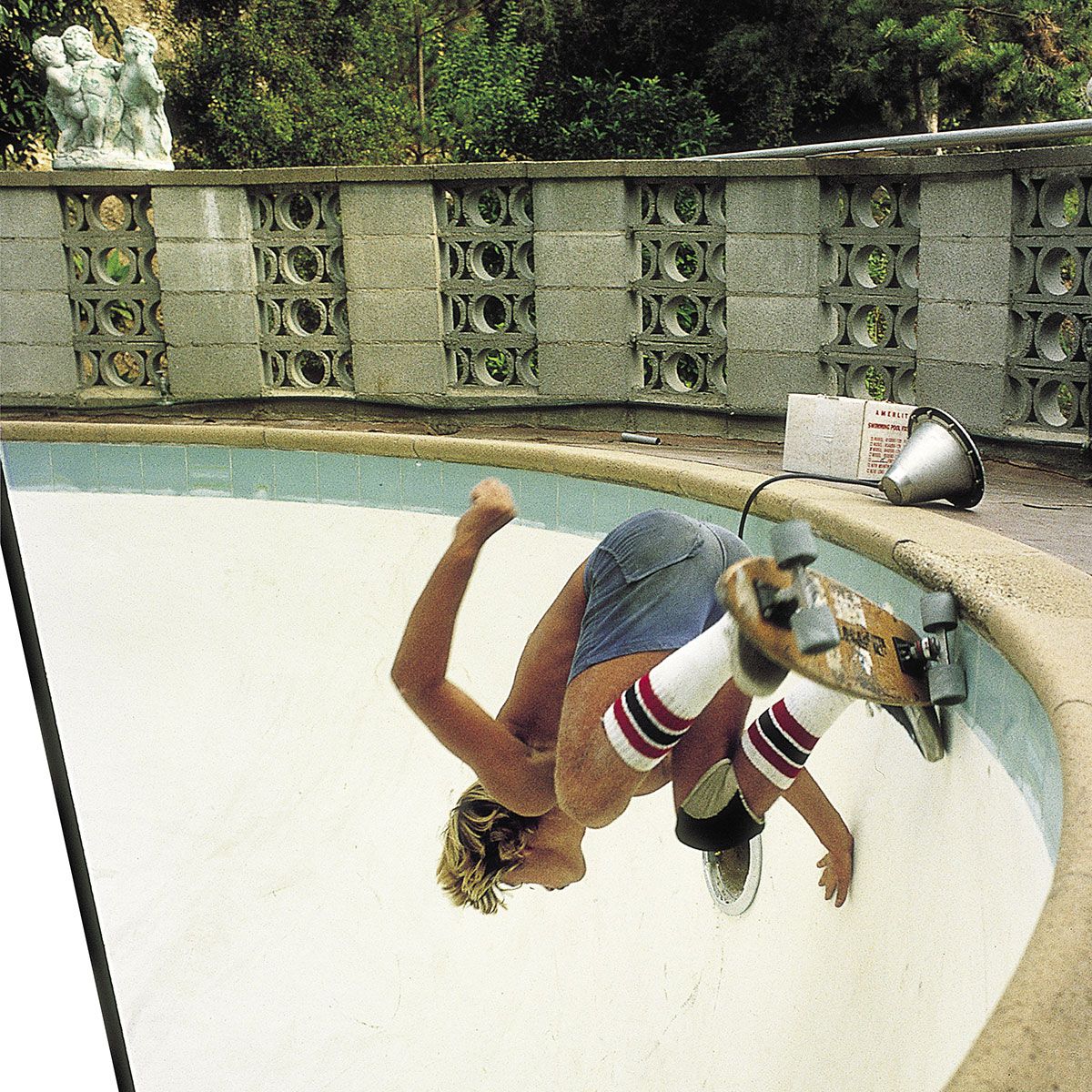
Jay Adams, Teardrop, 1976.
Stacy, consummate professional and all-around nice-guy introvert. Studied skating like it was a science or made it one because to him it was his way out of the real-life doldrums, and he knew that like none of the others.
DP was just insane. He had very unique thoughts and actions. His style was radical like Jay in a way, but next-generation in perspective. He was a “pro” and skated contests when park pools were happening in contests—after the first season. Even though he was close in age to Jay, he was the next generation as far as the “sport” perspective. He was sketchy as fuck, but did gnarly stuff that no one else would, a real thrill seeker like no one else.
BP was just a “pimp” before any of us even understood what that attitude and style meant. He taught us all a lot, coming from the professional skier’s perspective—he was another incredibly unique individual. PC, Wentzle, just mellow dudes in action but radical in style. Lance, nuts-and-bolts great rider, a great kid and man, a lover of the activity unparalleled. Hawk was just this skinny skinny little kid who was so next-generation and so good with the tricks that he stood out like crazy when I first saw him in the early ’80s as skateboarding was going into its first downturn of the modern era.
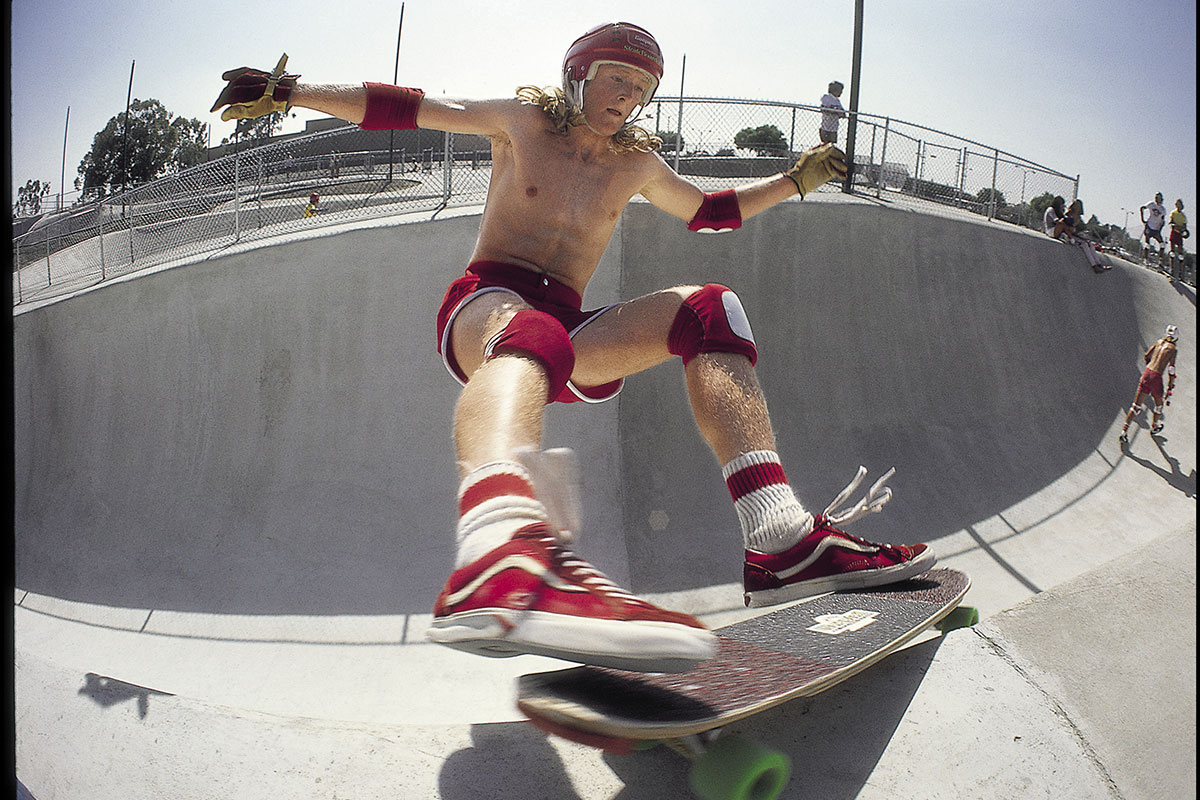
Stacy Peralta, Lakewood Skatepark, 1977.
What did you think the future held back then?
Nobody predicted or saw a future in skateboarding other than for personal enjoyment. Everyone was mostly living in the minute, so by the time our teens were over so were the days of being a rockstar and making a living off of something you had fun doing and would continue to do the rest of your life anyhow. None of us really had any idea what we would be doing. No one except maybe Stacy saw any future way to live off skateboarding. Maybe he did. Who the fuck thinks about your future as a teenager, back then? NO ONE!
In 1979 where did you think you would be in 40 years?
No fucking idea.
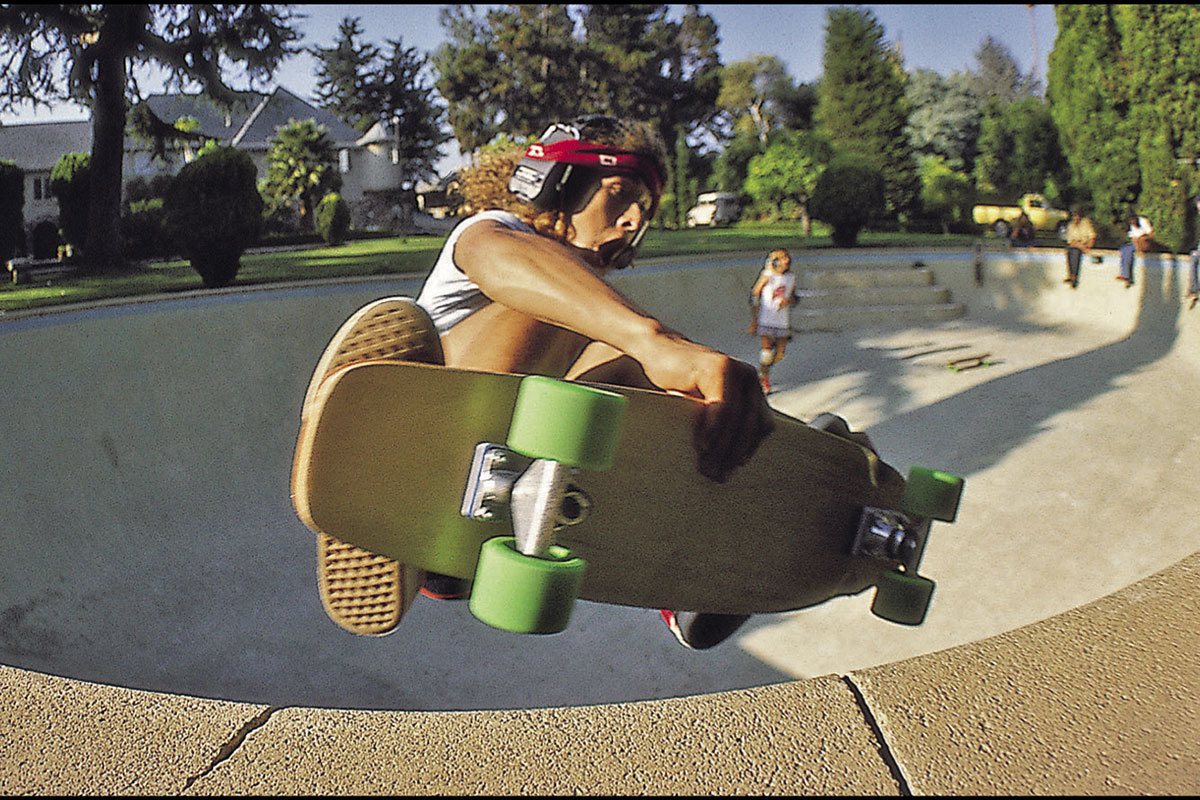
Tony Alva, Dog Bowl, 1977.
What would have been playing on the boombox (or stereo speakers) back when these images were shot?
Dogtown stuff? Boomboxes were not invented yet! Speakers up until ’78… Tunes would have been Nugent, Zeppelin, Hendrix, Aerosmith, Faces, Bowie perhaps, all the harder faster rock n roll of the day. Then by the time ’78 was done, as punk records made inroads into skateboarding culture, it was all Ramones, Devo, Damned, Buzzcocks, Pistols, that stuff.
How are music and skateboarding connected?
It is added fuel. Like if your car were operating on regular gas and you added jet fuel to it.
What skate media do you follow now? Who’s doing interesting things?
I follow @berrics and Skateboarding Saves on Instagram. I haven’t thought much of the magazines for many years since video came in to play, but there is always some good stuff sprinkled around I peek at now and then. But most are still too conservative for my liking. They may seem radical, some of them, but from what I’ve seen they all still are super scared to be too radical and are too corporate for my liking—makes them corny to me.
What do you think of skateboarding being in the Olympics?
Not much. I am not into competition, and the style of skating I like cannot be judged so easily, and really does not need to be. Skateboarding to me is best looked at as an art form, not a competition. It’s amazingly creative at its core best. It’s an incredible activity.
In contests it’s all so trick centered these days, and even when I was 14, we always used the line from the old breakfast cereal commercial we’d all see between cartoons on Saturday mornings on TV… “Trix are for kids.”
It may expose people to the “sport” but I think it’s best on the streets, in the parks, and backyards.

